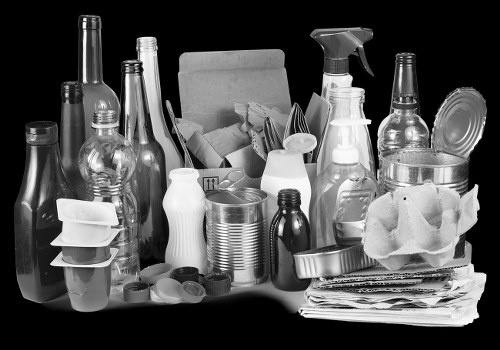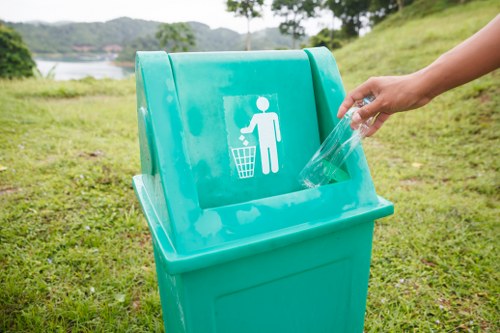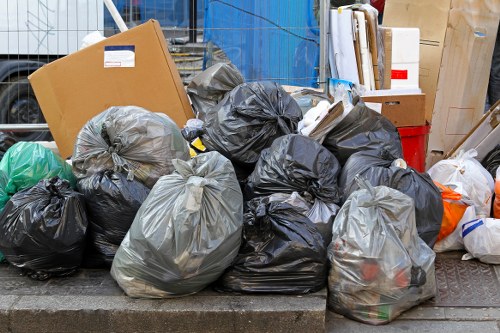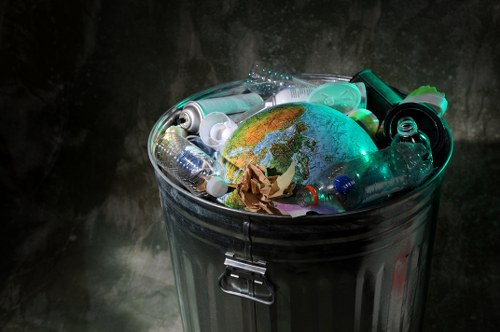Construction Waste Disposal in Pimlico: Efficient Solutions for a Sustainable Future
Understanding Construction Waste in Pimlico

Construction projects in Pimlico generate a significant amount of waste, ranging from concrete remnants to packaging materials. Proper construction waste disposal is crucial not only for maintaining the aesthetic appeal of the area but also for complying with local regulations and promoting environmental sustainability.
The variety of construction waste includes materials like brick, wood, metal, and plastics. Each type requires specific disposal methods to ensure that harmful substances do not contaminate the local environment.
Effective waste management reduces the burden on municipal landfills and minimizes the ecological footprint of construction activities. By implementing strategic disposal practices, businesses and contractors can contribute to a cleaner, greener Pimlico.
Types of Construction Waste
Common Materials

Construction sites typically produce a range of waste materials. Commonly discarded items include:
- Concrete: Often left over from building foundations and structures.
- Wood: Includes pallets, framing, and other wooden components.
- Metal: Such as steel beams and rebar.
- Plastics: Packaging materials and insulation.
Each material poses unique challenges for disposal and recycling, necessitating specialized approaches to manage effectively.
Understanding the types of waste produced is the first step in developing a comprehensive disposal strategy tailored to specific project needs.
Local Regulations and Compliance
Pimlico's Waste Management Laws

Pimlico has stringent regulations governing construction waste disposal to ensure environmental protection and public health. Contractors must adhere to guidelines set forth by local authorities, which include proper sorting, storage, and transportation of waste materials.
Compliance with these regulations not only avoids legal penalties but also fosters a culture of responsibility and sustainability within the construction industry.
Failure to comply with local laws can result in hefty fines and project delays, highlighting the importance of understanding and following all necessary protocols.
Methods of Construction Waste Disposal
Recycling and Reuse

Recycling and reusing construction waste are effective methods to reduce the overall environmental impact. Materials such as metal, wood, and certain plastics can be repurposed for future projects, lowering the demand for new resources.
Recycling not only conserves natural resources but also reduces the volume of waste sent to landfills, contributing to a more sustainable construction process.
Implementing recycling programs on construction sites can lead to significant cost savings and enhance the reputation of businesses committed to environmental stewardship.
Landfill Disposal
Proper Landfilling Techniques

When recycling is not feasible, proper landfill disposal is essential. This involves ensuring that waste is sorted correctly and transported to authorized facilities that manage disposal in an environmentally responsible manner.
Landfills designed for construction waste often have measures in place to prevent soil and water contamination, ensuring that harmful substances do not pose a threat to the surrounding community.
Choosing reputable landfill services in Pimlico guarantees that construction waste is handled in compliance with all local and national regulations.
Choosing the Right Waste Disposal Service in Pimlico
Factors to Consider
Selecting a reliable waste disposal service is critical for effective construction waste management. Consider the following factors:
- Licensing and Certification: Ensure the service provider is licensed and adheres to all regulatory standards.
- Recycling Capabilities: Choose services that prioritize recycling and sustainable practices.
- Cost-Effectiveness: Compare pricing structures to find a service that fits your budget without compromising quality.
- Customer Reviews: Research feedback from previous clients to gauge reliability and performance.
By thoroughly evaluating potential disposal services, you can partner with a provider that aligns with your project goals and environmental values.
Investing time in selecting the right service ensures seamless waste management and contributes to the overall success of your construction project.
Benefits of Professional Services
Engaging professional construction waste disposal services offers numerous advantages:
- Efficiency: Professional services streamline the waste disposal process, saving time and resources.
- Compliance: Experts are well-versed in local regulations, ensuring all disposal activities meet legal requirements.
- Environmental Impact: Professionals employ best practices to minimize the ecological footprint of construction projects.
- Cost Savings: Effective waste management reduces costs associated with storage, labor, and potential fines.
Leveraging the expertise of seasoned professionals can significantly enhance the sustainability and profitability of your construction endeavors.
Moreover, professional services provide peace of mind, allowing you to focus on other critical aspects of your project.
Environmental Impact and Sustainability
Promoting a Greener Pimlico
Proper construction waste disposal plays a vital role in preserving Pimlico's environment. Sustainable practices, such as recycling and responsible landfilling, help reduce pollution, conserve resources, and protect local ecosystems.
Adopting eco-friendly disposal methods contributes to Pimlico's reputation as a forward-thinking and environmentally conscious community. It also sets a positive example for other regions to follow.
By prioritizing sustainability in waste management, the construction industry can drive significant progress towards a more sustainable future.
Implementing Sustainable Practices
Integrating sustainable waste disposal practices involves several key steps:
- Waste Audits: Regularly assess the types and quantities of waste generated to identify opportunities for reduction and recycling.
- Training: Educate construction teams on proper waste management techniques and the importance of sustainability.
- Partnerships: Collaborate with recycling facilities and sustainable disposal services to enhance your waste management strategy.
- Innovation: Stay informed about new technologies and methods that can improve waste disposal efficiency.
Implementing these practices not only benefits the environment but also enhances the overall efficiency and reputation of construction projects in Pimlico.
Embracing sustainability is a responsibility that benefits both current and future generations, ensuring a healthy and vibrant community.
The Role of Technology in Waste Management
Advanced Disposal Solutions
Technological advancements have revolutionized the way construction waste is managed. Modern solutions offer greater efficiency, enhanced tracking, and improved recycling capabilities.
Utilizing technology such as waste tracking software and automated sorting systems can optimize waste disposal processes, reducing human error and increasing overall effectiveness.
Embracing these technologies allows construction companies in Pimlico to stay ahead of regulatory changes and meet the growing demand for sustainable practices.
Cost Management Through Efficient Waste Disposal
Reducing Expenses
Effective construction waste disposal can lead to significant cost savings. By minimizing waste volume through recycling and reusing materials, companies can reduce disposal fees and lower overall project costs.
Additionally, efficient waste management practices prevent potential fines and penalties associated with non-compliance, safeguarding financial resources.
Investing in proper disposal methods is a financially sound strategy that supports both short-term project budgets and long-term business sustainability.
Community Impact and Engagement
Building Positive Relationships
Properly managing construction waste demonstrates a commitment to the community and the environment. It fosters trust and builds positive relationships with local residents and stakeholders.
Engaging with the community through sustainable practices and transparent waste management enhances the reputation of construction firms and contributes to the overall well-being of Pimlico.
Community-focused waste disposal initiatives can lead to increased support and collaboration, facilitating smoother project execution and long-term success.
Future Trends in Construction Waste Disposal
Innovations on the Horizon
The future of construction waste disposal is poised for significant advancements. Emerging trends include the increased use of eco-friendly materials, advancements in recycling technologies, and the integration of artificial intelligence in waste management systems.
These innovations promise to further reduce the environmental impact of construction activities and enhance the efficiency of waste disposal processes.
Staying informed about these trends allows construction companies in Pimlico to adopt best practices and maintain a competitive edge in the industry.
Conclusion
Effective construction waste disposal in Pimlico is essential for maintaining a sustainable and thriving community. By understanding the types of waste, adhering to local regulations, and implementing efficient disposal methods, construction projects can minimize their environmental impact and contribute positively to the area's growth.
Partnering with professional waste disposal services ensures compliance, enhances sustainability, and offers cost-effective solutions that benefit both businesses and the community.
Contact us today to manage your construction waste responsibly and join the movement towards a greener, more sustainable Pimlico.